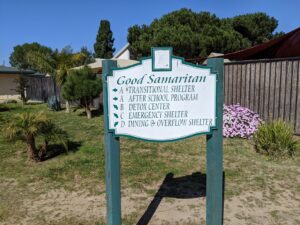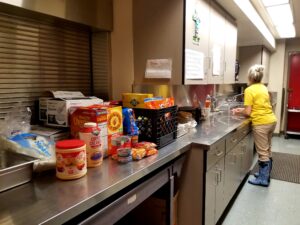BY SAM WATERSTONE
As COVID-19 began disrupting communities across the country in late March, disturbing reports of homeless shelter shutdowns and botched emergency response efforts began to circulate through the media.
A homeless shelter in Las Vegas didn’t have an emergency plan, so it decided to paint socially distanced rectangles in a parking lot and place mats on the ground where clients could sleep for the night. In San Francisco, when shelter-in-place orders went into effect, homeless service providers struggled to respond, and the number of individuals living on the street in the city’s Tenderloin neighborhood skyrocketed, increasing by 400%.

Santa Barbara County has had its share of struggles during the pandemic, as have all communities around the world. That said, we are lucky to live in a region with a strong and forward-thinking social sector, and our county’s response has been exceptional – particularly programs serving our homeless population.
One notable success story comes from Good Samaritan Shelter (also known as “Good Sam”), one of the county’s largest homeless shelters and an important health and human services provider. With facilities in the Santa Maria Valley and Lompoc, Good Sam has provided emergency shelter, substance abuse treatment, and wellness services to hundreds of individuals during the pandemic.
Fortunately, the organization has been able to avoid major crisis while coordinating permanent housing for clients at a higher rate than ever before. This is due, in part, to support from the Santa Barbara Foundation and our amazing donors.
Back in April 2019, the Foundation awarded Community Disaster Relief Fund (CDRF) Grants to Santa Barbara County nonprofits as part of our commitment to long-term recovery following the Thomas Fire and 1/9 Debris Flow. The CDRF Grant Program includes Mitigation and Preparedness Projects, funding that is designed to help organizations prepare for the next catastrophic event, whatever it might be. Good Sam applied for and received a $20,000 CDRF Grant to ensure that the agency would be prepared when the next disaster struck.
“We hired a consultancy called Resolute Associates to help us develop our Emergency Response Plan,” explained Sylvia Barnard, Executive Director of Good Samaritan Shelter. “The consultants walked through all of our facilities, understood the magnitude of all the people we serve – we have over 500 people under roof every night – and they helped us figure out our response plan, should we have any kind of emergency or natural disaster.”
In January 2020, Good Sam’s Executive Staff and Program Managers received an extensive training on how to operate an Emergency Operations Center (EOC). Additionally, all staff members became certified in first aid, CPR, and trauma-informed care. In early March, with the pandemic looming, Good Sam’s training was put to the test.
“As the pandemic was approaching and things looked grim, we were able to assemble our internal EOC,” said Alexis Nshamamba, Quality Assurance Manager and leader of the EOC at Good Sam. “Because we had a trial run operating the EOC, we really had the tools we needed to work together quickly and to understand that each part of this team has its own unique role.”
While many homeless shelters around the country were closing their doors or struggling to react to new safety guidelines, Good Sam was quickly adapting their programs to keep clients healthy and safe. The agency immediately implemented social distancing measures and reduced the number of clients in each facility by half. They made up for this reduced capacity by expanding their facilities, obtaining trailers where clients entering the emergency shelter program can quarantine, and drastically increasing their housing rate – the percentage of clients who transition from temporary emergency shelter into permanent housing.
One of Good Sam’s major successes has been their ability to increase the housing rate for their clients, despite being in a global pandemic. From September to December 2019, Good Sam’s housing rate was 34% – about average for any given year. Since the pandemic began, their housing rate has increased to over 50%. Due to increased government funding and an effective game plan, Good Sam has been able to find positive housing destinations for more than half of the clients who have walked through their doors over the past 8 months.

For Good Sam, the pandemic has not been without its challenges. At one point, there was a small outbreak at the agency’s Shelter Campus, where a handful of clients tested positive for COVID-19, and the facility entered a mandatory four-and-a-half-week quarantine. Unsurprisingly, Good Sam was prepared for the worst, and along with an emergency COVID-19 Response Grant from SBF, the organization was able to stop the virus in its tracks.
“When our Shelter Campus had an outbreak, there were close to 80 folks on that campus, and I think that because of the policies we had in place and the response we were able to provide, we stopped it as fast as possible,” Nshamamba explained.
“Good Samaritan is just so incredibly grateful to the Santa Barbara Foundation for having the foresight to create a Community Disaster Relief Fund that allows organizations like ours, that would not normally consider disaster planning, to have that opportunity to implement this plan,” said Barnard.
To learn more about Good Samaritan Shelter and their work to provide safe housing and support services for those in need, visit goodsamaritanshelter.org.